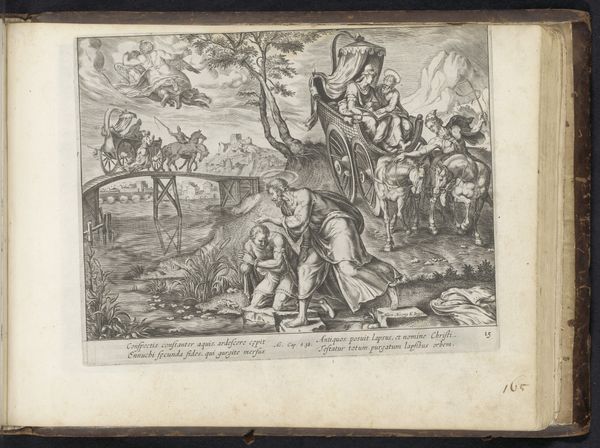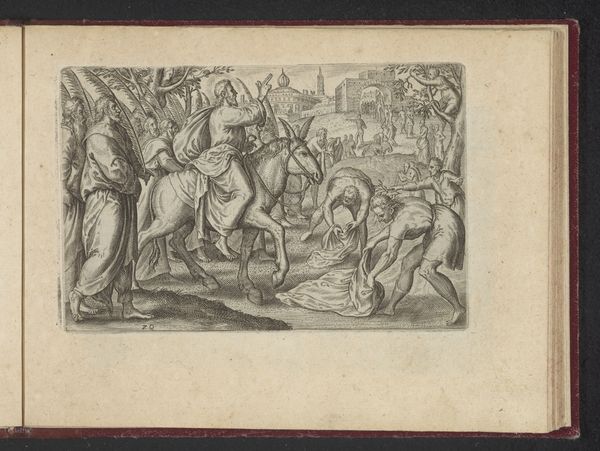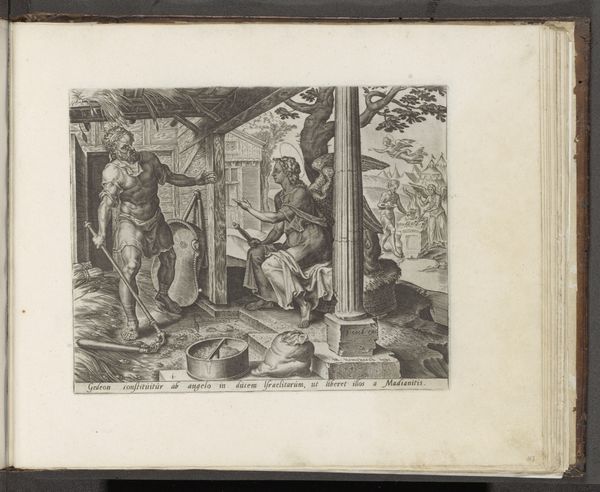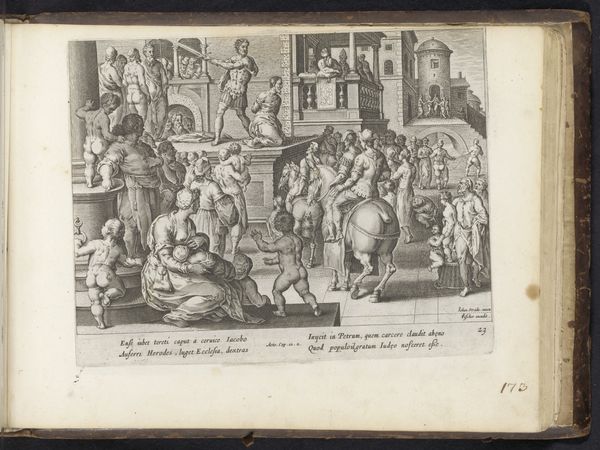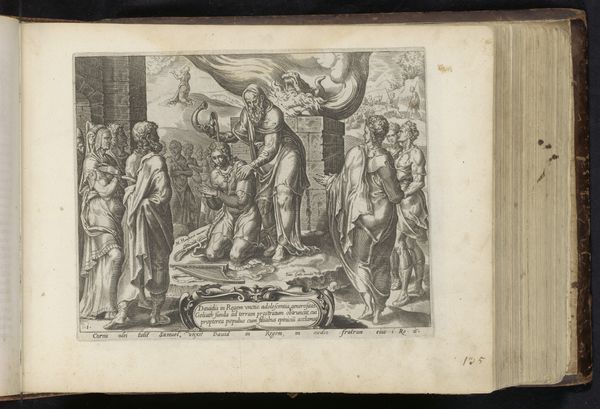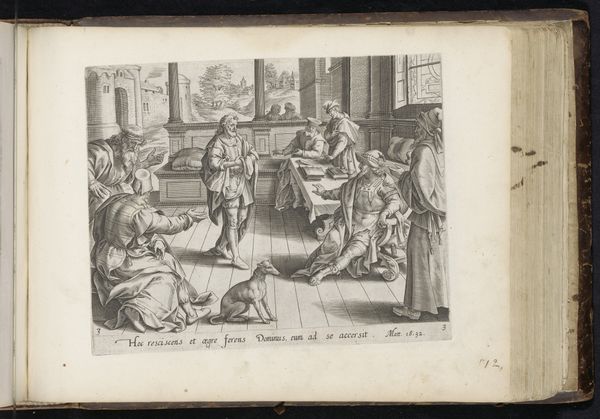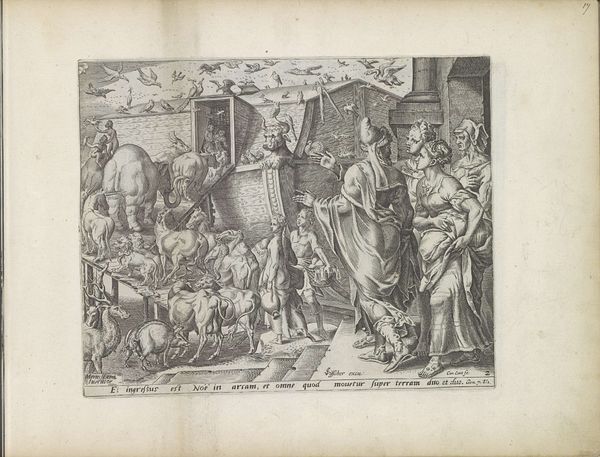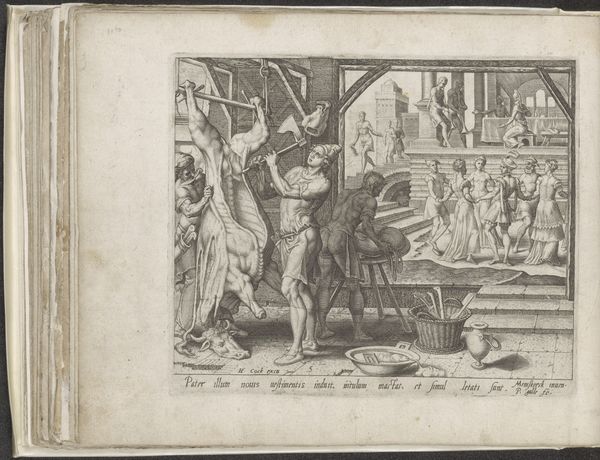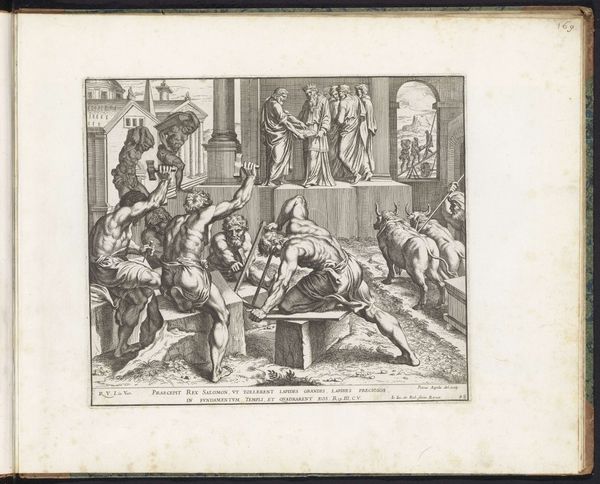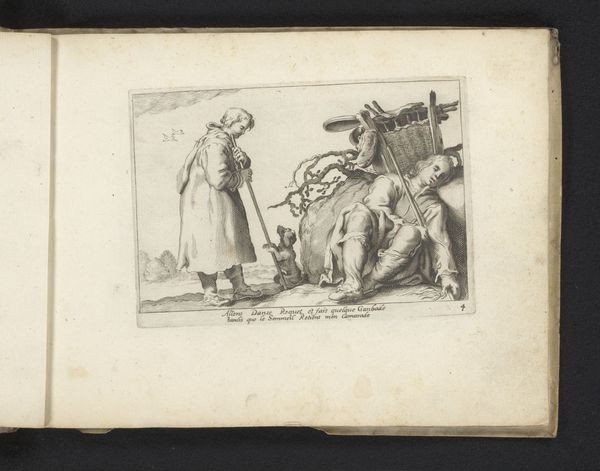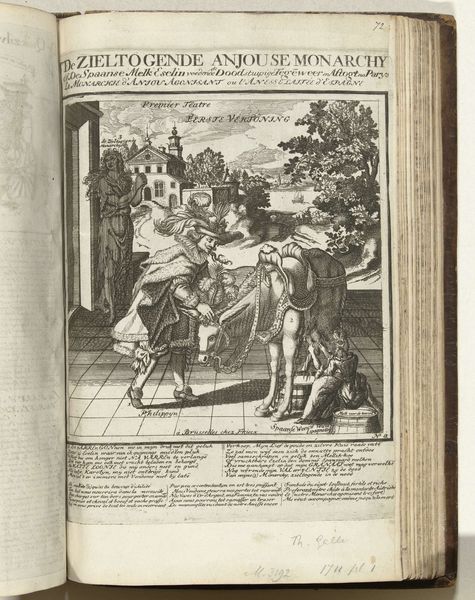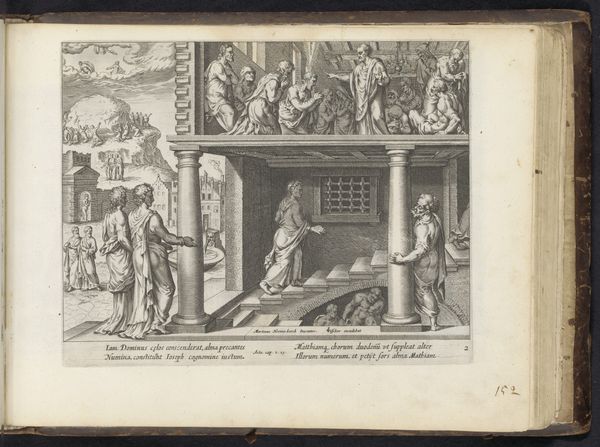
Het is gemakkelijker voor een kameel om door het oog van een naald te gaan, dan voor een rijke om het koninkrijk van God binnen te gaan 1563
0:00
0:00
philipsgalle
Rijksmuseum
print, engraving
# print
#
mannerism
#
figuration
#
history-painting
#
engraving
Dimensions: height 171 mm, width 232 mm, height 264 mm, width 340 mm
Copyright: Rijks Museum: Open Domain
Curator: Welcome. Before us is a Mannerist print dating back to 1563. Philips Galle, a master engraver, produced this fascinating work. The title? "It is easier for a camel to pass through the eye of a needle than for a rich man to enter the kingdom of God." It is held at the Rijksmuseum. Editor: Well, it's visually quite striking, isn't it? Immediately, the juxtaposition of the bulky camel against the small, almost impossibly narrow gate creates a strong sense of unease and confinement. The figures seem agitated, emphasizing this feeling. Curator: Indeed. Galle cleverly uses figuration to highlight the proverb's core message. The gate isn’t just any gate, it’s the entrance to Paradise shown just beyond. Notice how he contrasts the earthly and divine through detailed depictions and spatial organization. The camel, burdened by worldly goods and pushed by handlers, symbolizes the wealthy struggling to attain spiritual purity. Editor: Absolutely. The lines are incredibly sharp and precise, typical of engraving. And see how he varies the depth of the etching, creating tonal differences. This helps differentiate textures and define the forms in what could easily become a flat plane. I wonder about the philosophical impact of this print during that period. Curator: Given the religious and social upheavals of the time, its impact was profound. This engraving visualizes a central tenet of Christianity: the danger of wealth as an impediment to spiritual salvation. It acts as both a moral lesson and a societal critique, resonating with deep-seated anxieties about wealth inequality. The symbolism serves as a cultural mirror. Editor: Right. And even beyond that direct interpretation, there is the concept of forcing something large, unnatural even, through an opening too small for it. This echoes the futility of trying to manipulate the inflexible structures we’re hemmed by—the social, even aesthetic. Curator: Precisely! A convergence of faith, society, and human struggle, rendered with skill and insight, all captured on a print! Editor: I'm left thinking how such careful construction of space and line adds layers of visual commentary to centuries of scriptural discussion on the nature of belief.
Comments
No comments
Be the first to comment and join the conversation on the ultimate creative platform.

